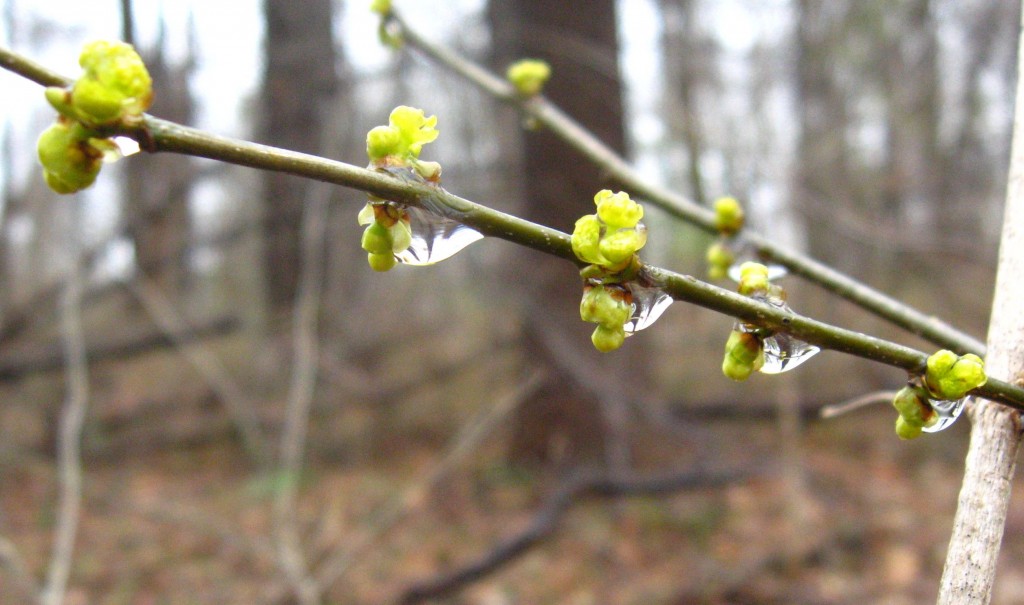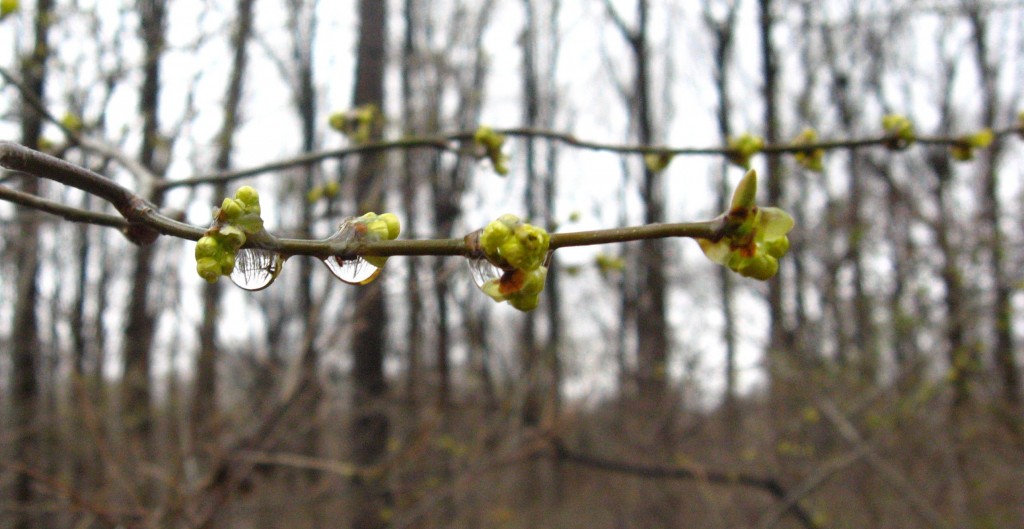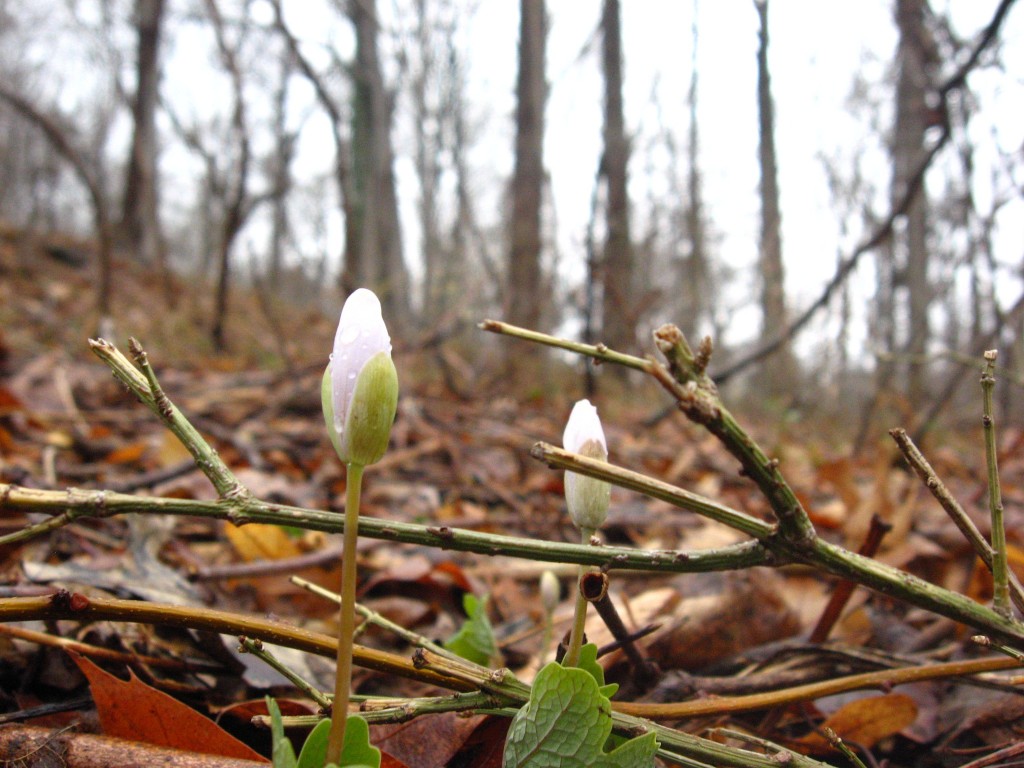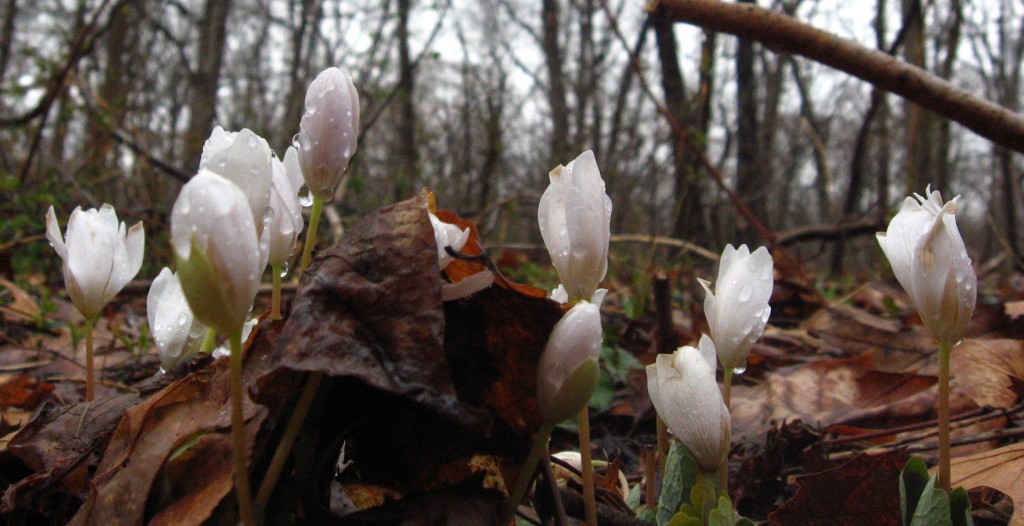
Lindera benzoin
Spicebush has become one of our favorite blooms of the Spring. Â It took us years to even notice them. Â The spicebushes along the path leading to Morris Park Road were covered with Japanese honeysuckle. Â The subtle yellow hue was never visible. Â Now that the invasive vine has been removed, a glimpse of light brings out the tiny flowers, offering an airy splash of color in the early Spring.

Spicebush is not to the taste of deer, although they will eat it if they are hungry enough. Â It is the most dominant remaining native shrub in our area.

Sanguinaria canadensis
The photo above is a symbolic testimony of the resilience of our native wildflowers in an urban, degraded forest. Â The branch you can see in the foreground is Euonymus alatus, the exotic invasive burning bush that you can see at every gas station or landscaped parking lot. Â Here it has been removed and the remains cover the forest floor in this area of restoration (see the post “Wall of Invasives Toppled). Â Now the bloodroot can grow without being completely shaded out by invasive shrubs. Â We hope to see larger colonies in that spot next year.

Another success story for our resilient bloodroot: Â the colony you see in this photo was overcrowded and shaded out by a thicket of multiflora rose, only two years ago.
The lesson we have learned is that by simply removing the invasive plants, there is enough native flora already in place in the forest to grow back to a critical mass. Â In some situations of extremely degraded urban forests, this may not be the case.
By the way, it looks like the weather is going to be nice this weekend, with Sunday being the best. Â Come and visit Morris Park and see some bloodroot blooming!


